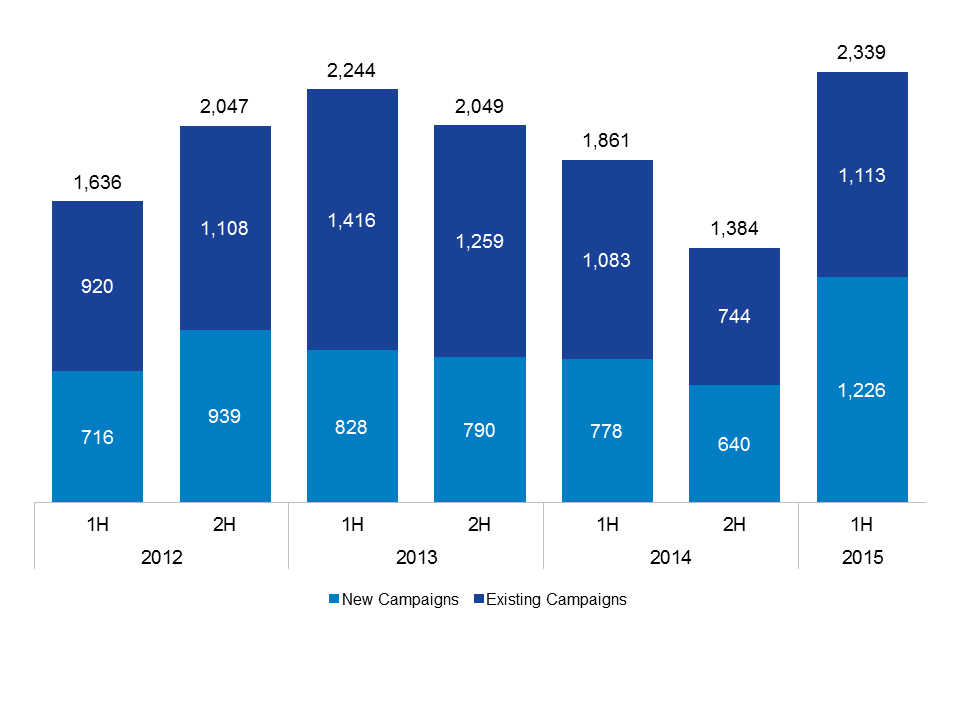New Defendants in Troll Campaigns Nearly Double
Current data shows that patent trolls are thriving—having added nearly twice as many new defendants to infringement lawsuit campaigns in the first half of 2015 than during the second half of last year—despite court decisions and reforms thought to be deterrents. The pace of added defendants in the first half of 2015 was greater than in any half-year period dating at least back through 2012 (see Figure 1).
This study of troll campaigns—defined as a group of cases that a troll files accusing multiple defendants of infringing the same patents—highlights the ability of patent trolls to adapt to changing market conditions.
Figure 1: Defendants Added to Litigation Campaigns

Out with the old
Before mid-2014, patent trolls focused more on adding new defendants to old (or “existing”) litigation campaigns, rather than launching new campaigns. Beginning with the second half of 2014 and continuing into 2015, trolls instead began adding more defendants by launching new campaigns. What does this mean?
Adapting and adjusting strategies
What does this mean? The explanation begins with the fact that many of the weakest patents at the heart of older litigation campaigns have been—or likely will be—invalidated. This is thanks to legal reforms in 2011 that gave defendants more leverage to challenge those patents, as well as US Supreme Court decisions in 2014 such as Alice v. CLS Bank.
Those changes—in addition to other recently proposed reforms—are presumably impacting troll behavior on two fronts. For one, trolls are likely seeking different, stronger patents to start new campaigns, rather than relying on weaker patents already in suit. Further illustrating their resilience, trolls also are looking for new, more vulnerable targets (often companies with revenues less than $100 million) that lack the experience or legal budget to take advantage of Alice or other reforms in defending against the lawsuits.